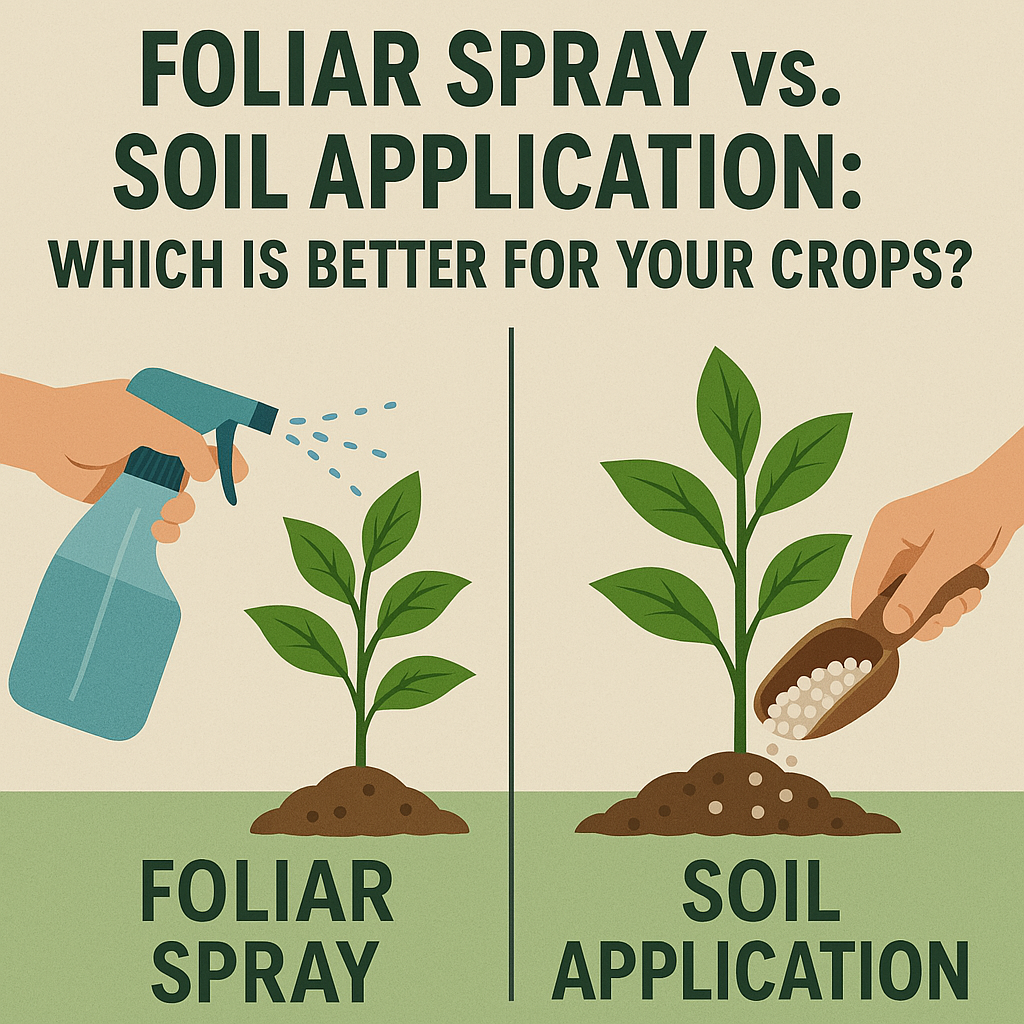Foliar Spray VS Soil Application: Which is Better for Your Crops?
Choosing the right method of applying nutrients is crucial for maximizing crop growth and yield. Two common methods are foliar spray and soil application, each with its own advantages.
Foliar Spray
-
Quick Nutrient Absorption – Nutrients are absorbed directly through leaves, providing fast results.
-
Ideal for Correcting Deficiencies – Useful when plants show nutrient deficiencies and need an immediate boost.
-
Enhances Growth During Critical Stages – Helps during flowering, fruiting, or stress conditions.
-
Best for Micronutrients – Efficient for elements like zinc, iron, and boron, which are needed in small quantities.
Soil Application
-
Long-Lasting Nutrient Supply – Nutrients are absorbed by roots and provide sustained benefits.
-
Essential for Macronutrients – Best for nitrogen, phosphorus, and potassium, which plants require in larger amounts.
-
Improves Soil Health – Supports microbial activity and overall soil fertility.
-
Suitable for All Crops – Works well in all types of farming systems, including drip irrigation.
Which One is Better?
The choice depends on crop needs, soil conditions, and nutrient type. Foliar spray is ideal for quick correction of deficiencies, while soil application ensures long-term nutrient availability. A combination of both methods can provide the best results for healthy and productive crops.
